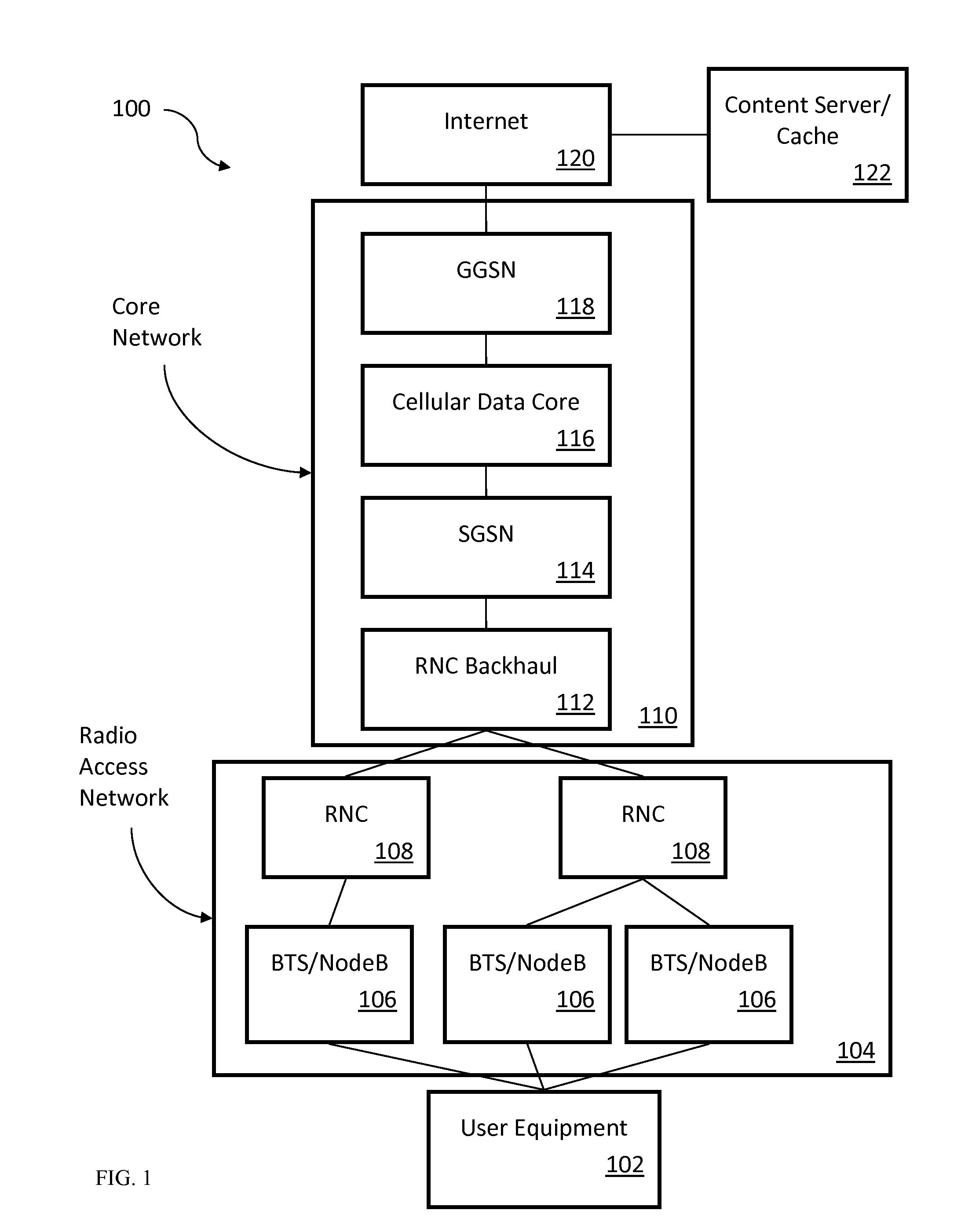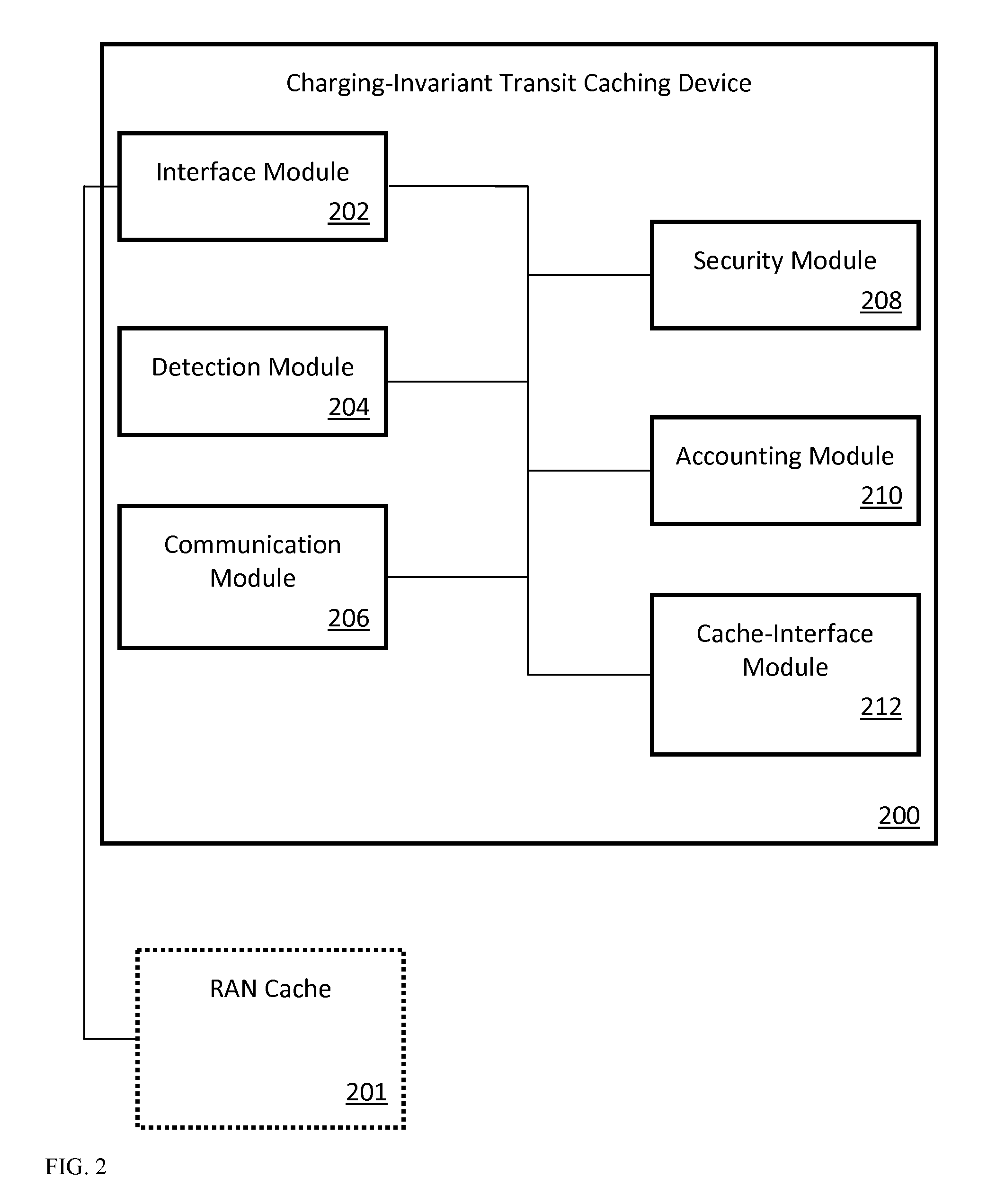Charging-invariant and origin-server-friendly transit caching in mobile networks
a mobile network and transit caching technology, applied in the field of radioaccess networks, can solve the problems of presenting a challenge to the accounting system, cache or proxy device, etc., and achieve the effects of reducing network lag time, facilitating download and upload, and increasing content cache us
- Summary
- Abstract
- Description
- Claims
- Application Information
AI Technical Summary
Benefits of technology
Problems solved by technology
Method used
Image
Examples
Embodiment Construction
[0027]FIG. 1 illustrates a network 100 that includes user equipment 102, a RAN 104, a core network 110 connected to the Internet 120, and a content server / cache 122. The content server / cache 122 may be or include a content-aware web cache or a content-origin server. The RAN 104 may include one or more BTS / NodeBs 106 connected to one or more RNCs 108, as shown in FIG. 1. The core network 110 may be a UMTS network and may include an RNC backhaul 112, an SGSN 114, a cellular data core 116, and / or a GGSN 118. Note that while the examples and descriptions here illustrate a 3G / UMTS / HSDPA wireless network, the invention may be embodied in any RAN, including but not limited to GSM / GPRS, CDMA, LTE, or WIMAX networks, or in wire-line access networks. For example, the NodeBs 106 in a UMTS network may be BTSs in a GSM network. The core network 110 connects to the Internet 120 through the GGSN 118. A content-aware web cache 122, deployed outside of the RAN 104, is connected to the Internet 120. ...
PUM
 Login to View More
Login to View More Abstract
Description
Claims
Application Information
 Login to View More
Login to View More - R&D
- Intellectual Property
- Life Sciences
- Materials
- Tech Scout
- Unparalleled Data Quality
- Higher Quality Content
- 60% Fewer Hallucinations
Browse by: Latest US Patents, China's latest patents, Technical Efficacy Thesaurus, Application Domain, Technology Topic, Popular Technical Reports.
© 2025 PatSnap. All rights reserved.Legal|Privacy policy|Modern Slavery Act Transparency Statement|Sitemap|About US| Contact US: help@patsnap.com



